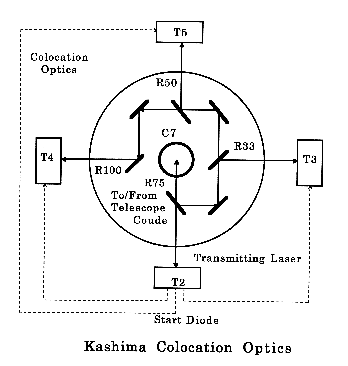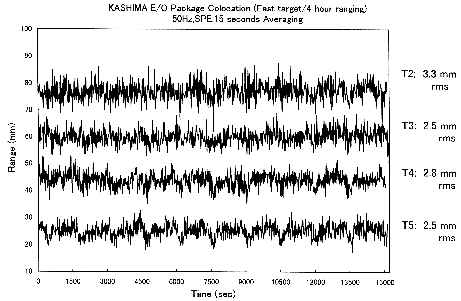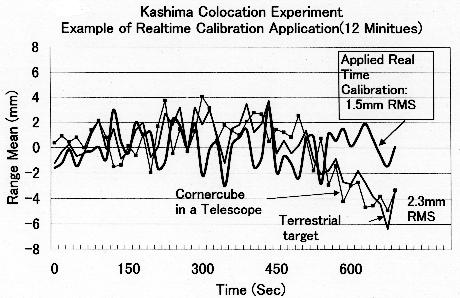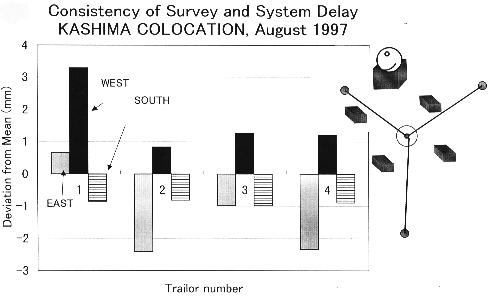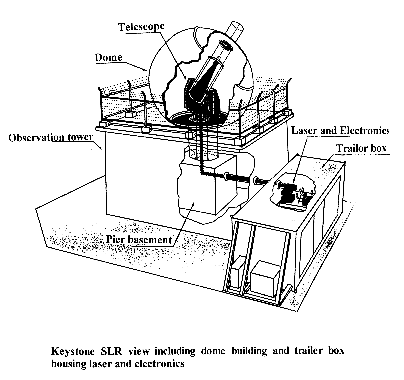
Figure 1. Schematic View of Keystone SLR.
Communications Research Laboratory
4-2-1 Nukui-kita, Koganei, Tokyo 184-8795, Japan
Abstract: The Keystone SLR network has been installed and is starting test observation on a single baseline from February 1997. The role of SLR is to provide a combination of techniques to contribute to baseline accuracy up to a few mm in 3-D. The calibration of the measured range is the most important work for SLR. It is normally achieved by using the laser ranging system itself to measure the distance to one or more local ground targets whose distances from the instrumental reference point have been accurately measured by geodetic survey. The difference between the laser ranging value and the survey value is then applied to satellite ranging measurements. In order to demonstrate stability and difference of the ranges within millimeters, we set up colocation optics for calibration of four optic-electronic packages, configuring all four packages connected to a single telescope and one of laser transmitting to the ground and satellite targets to receive simultaneous signals. Ranging to ground target in four hours results in a single shot precision of 4-6mm rms, and 15-second (normal point) precision of 2-3mm rms. We see a small common drift possibly due to laser characteristics, and demonstrated stability of 10 minutes. System delay reaches 1.5mm rms by applying real time calibration that uses a corner cube on \pagebreak the telescope aperture. MINICO (Mini Colocation) procedure which ensures consistency among survey and system delay is within $\pm$ 3mm, found significant discrepancies among ground target survey results.

